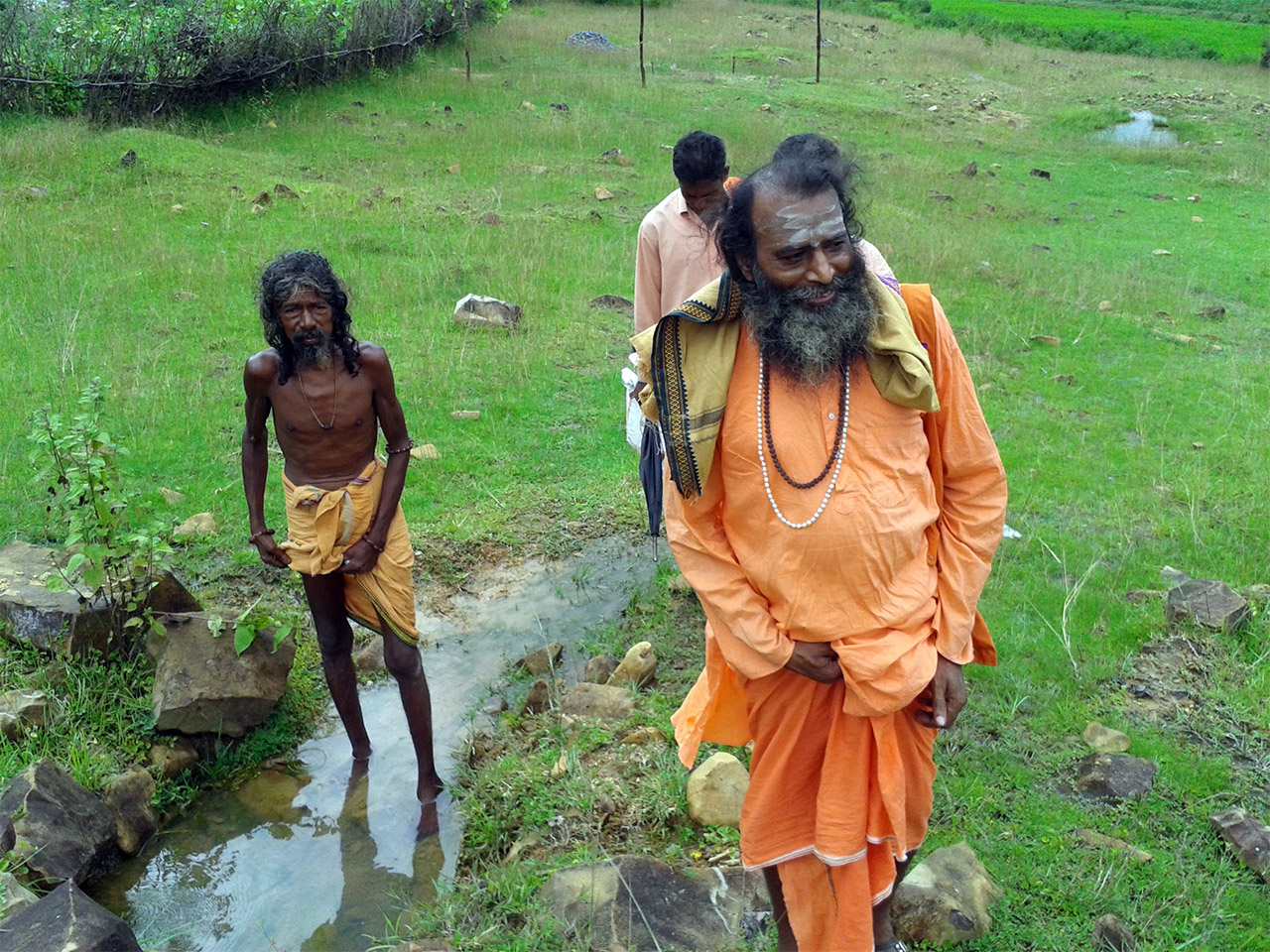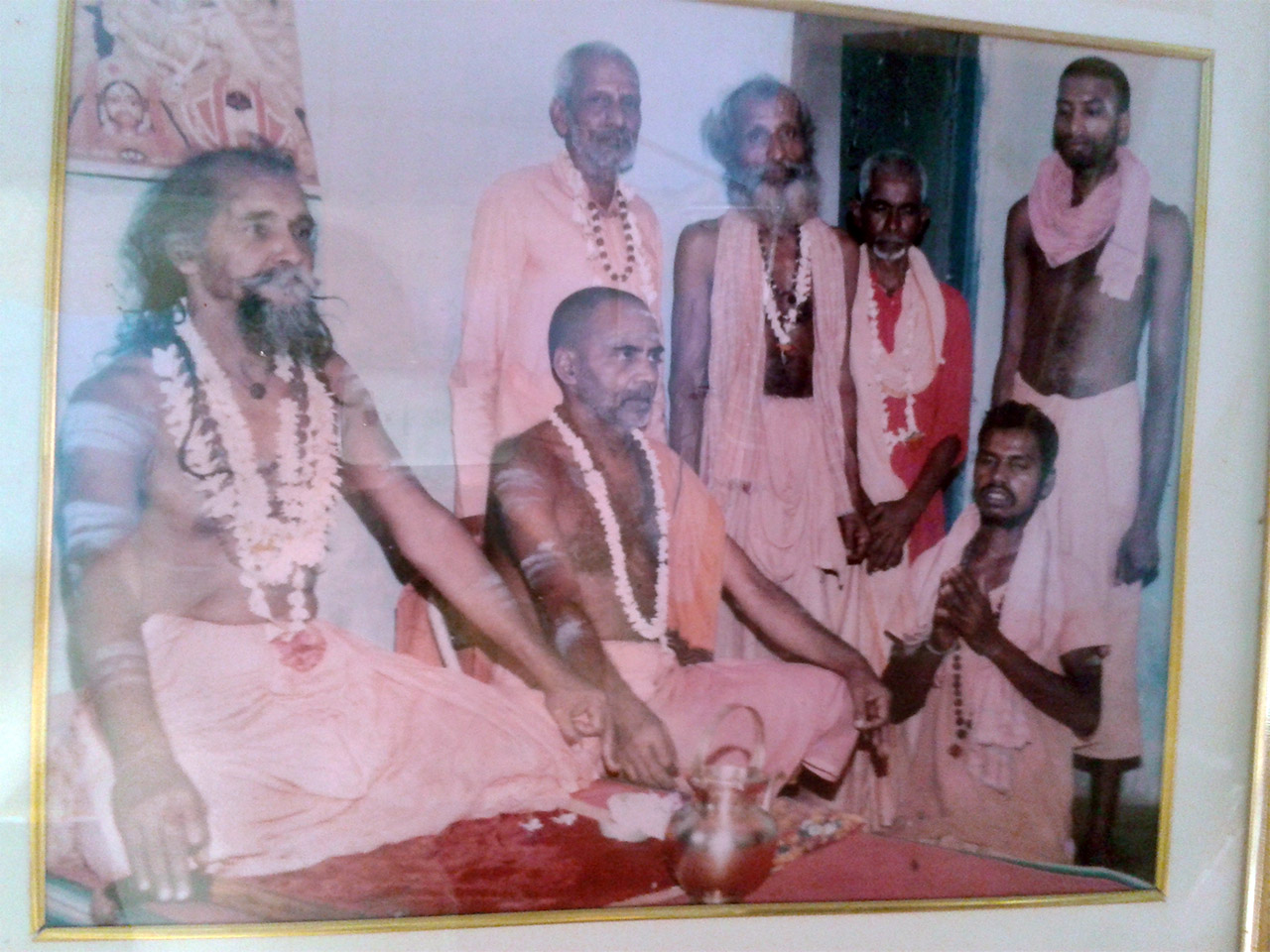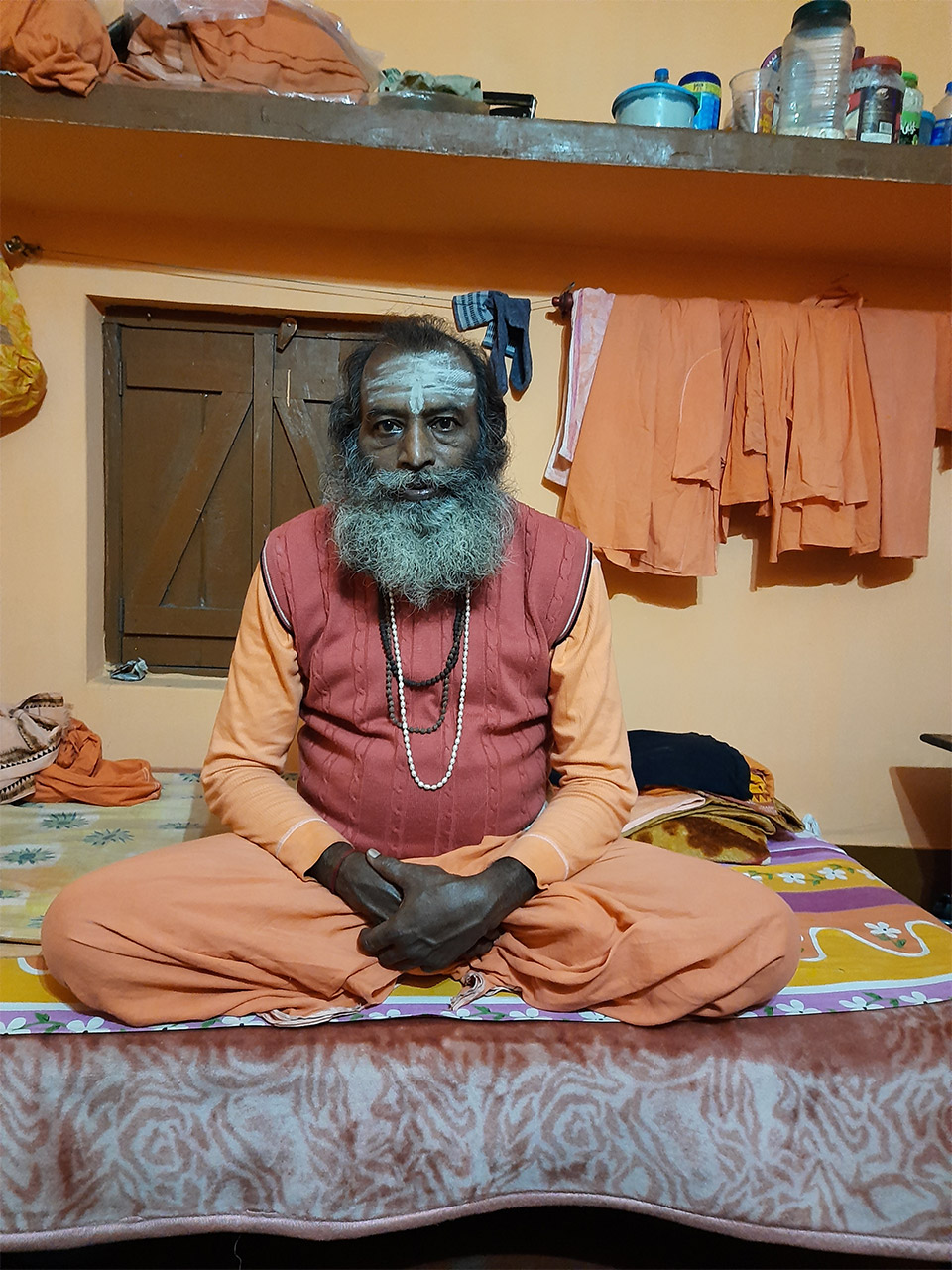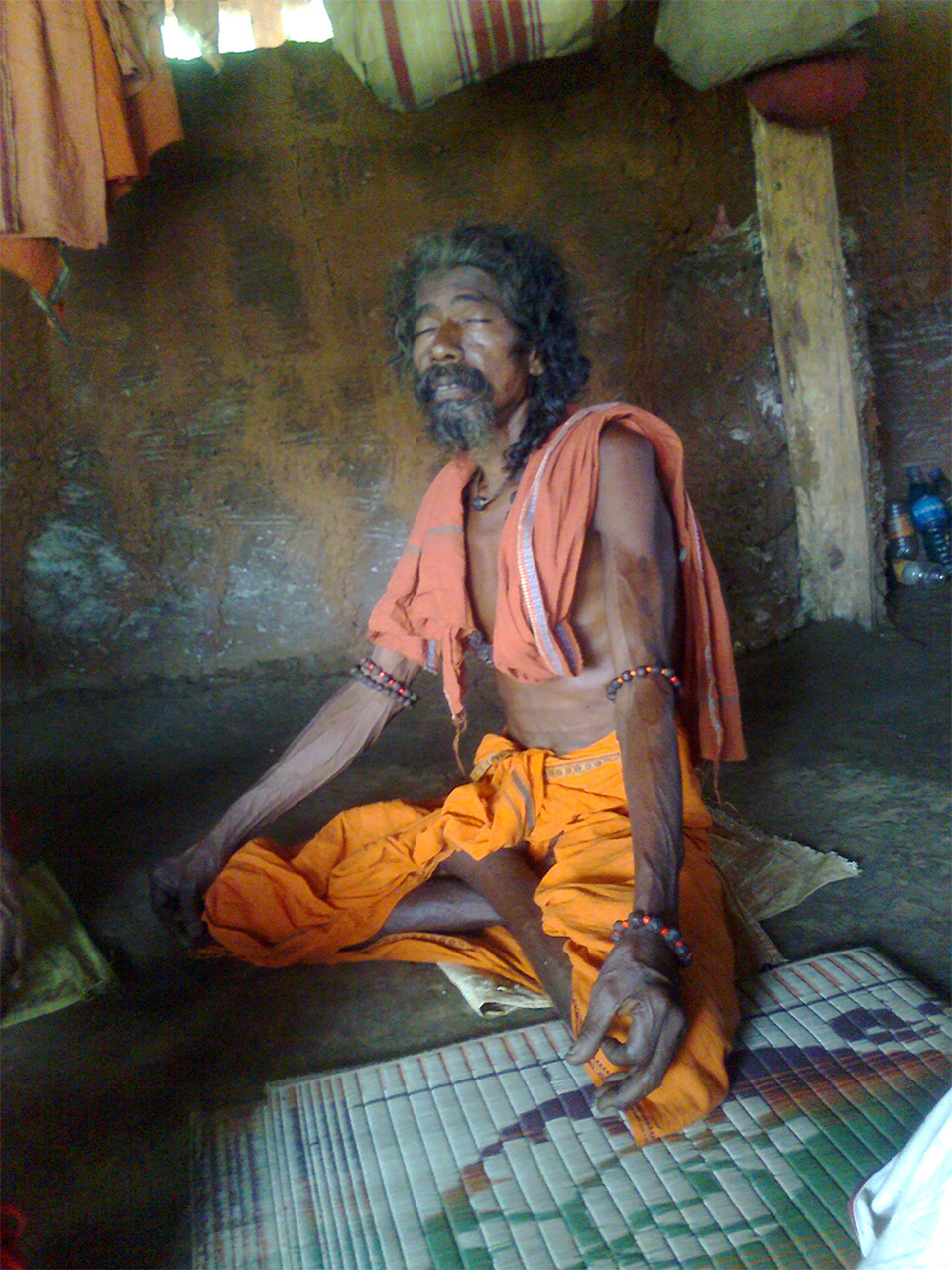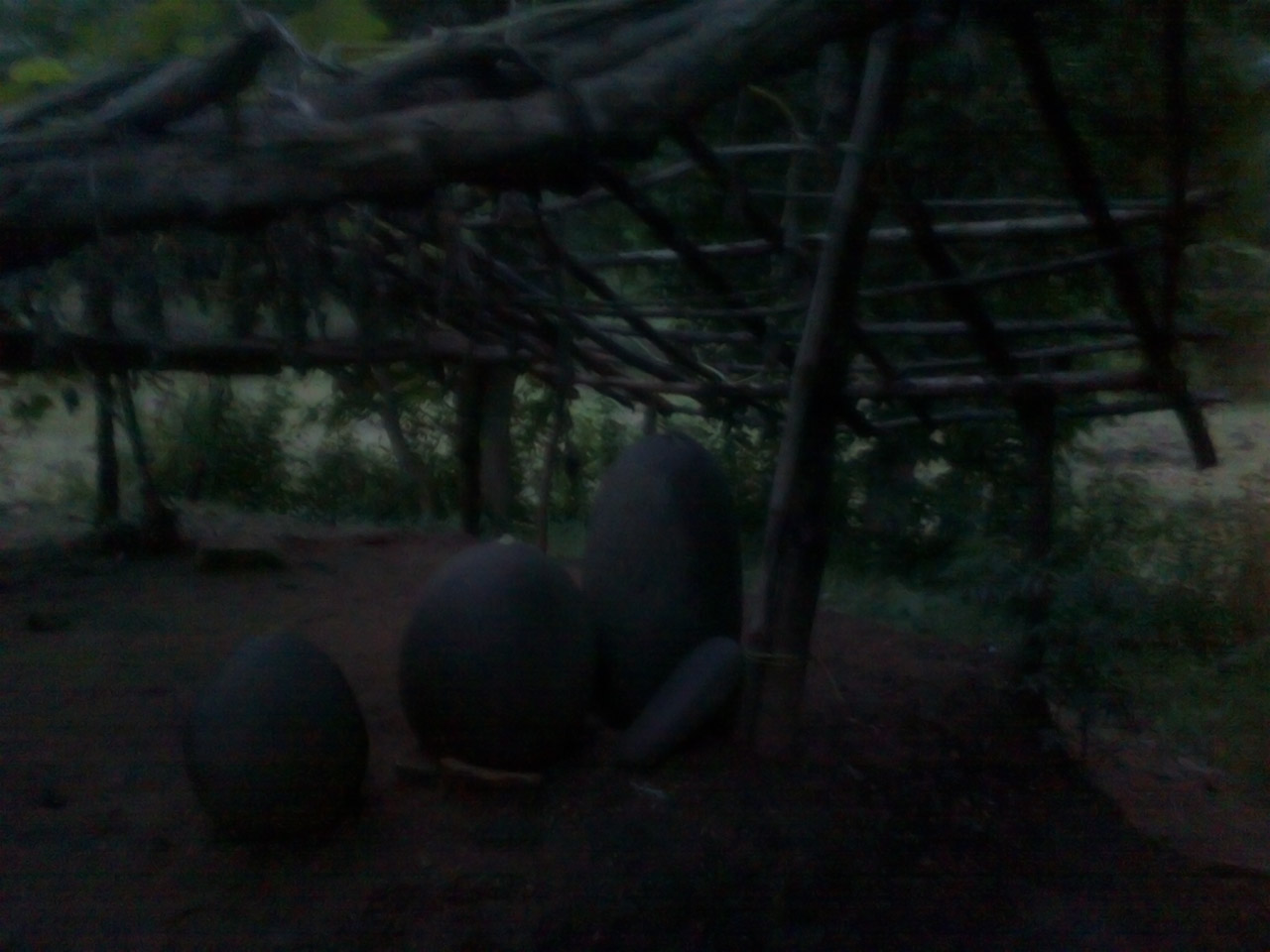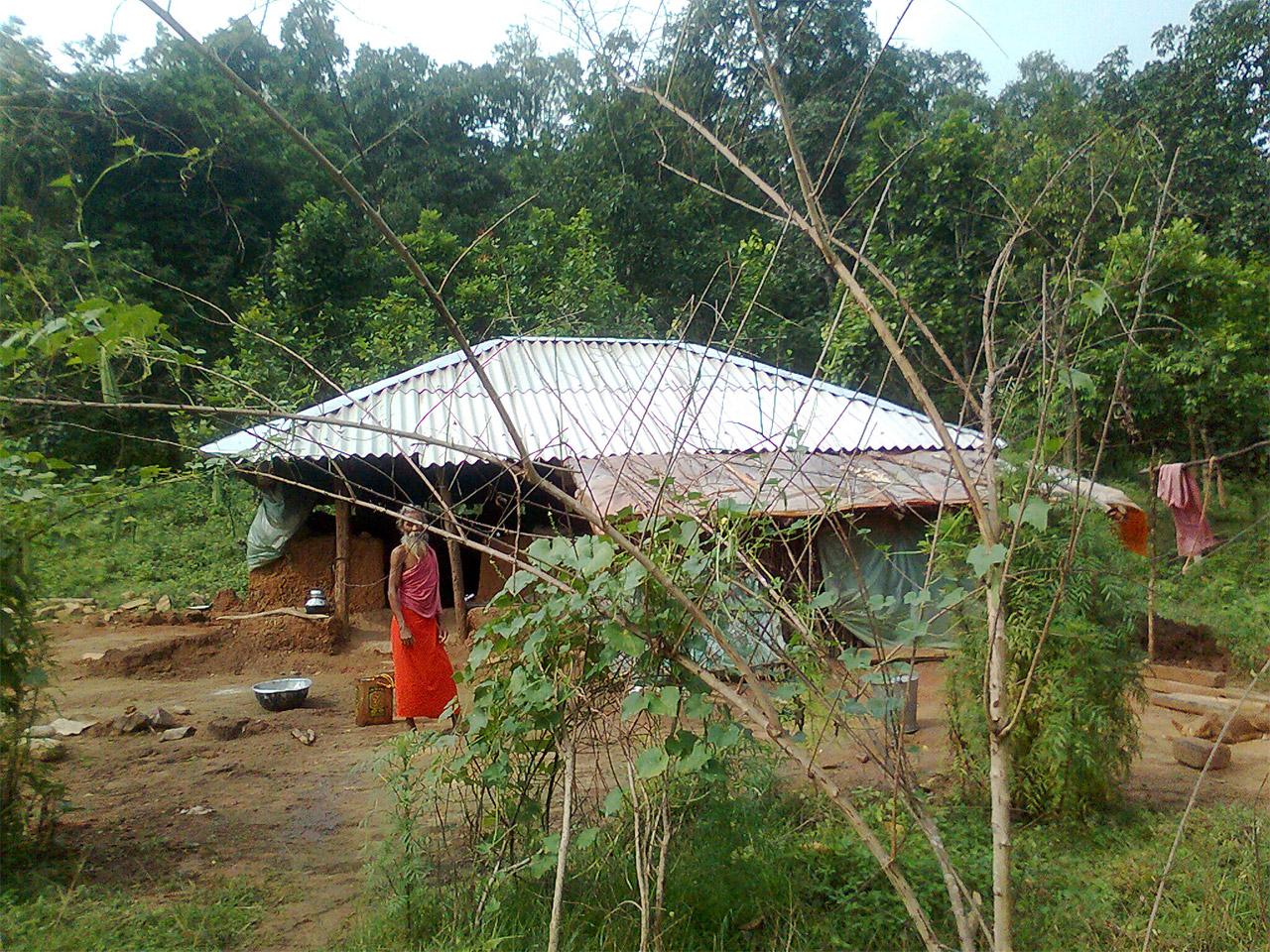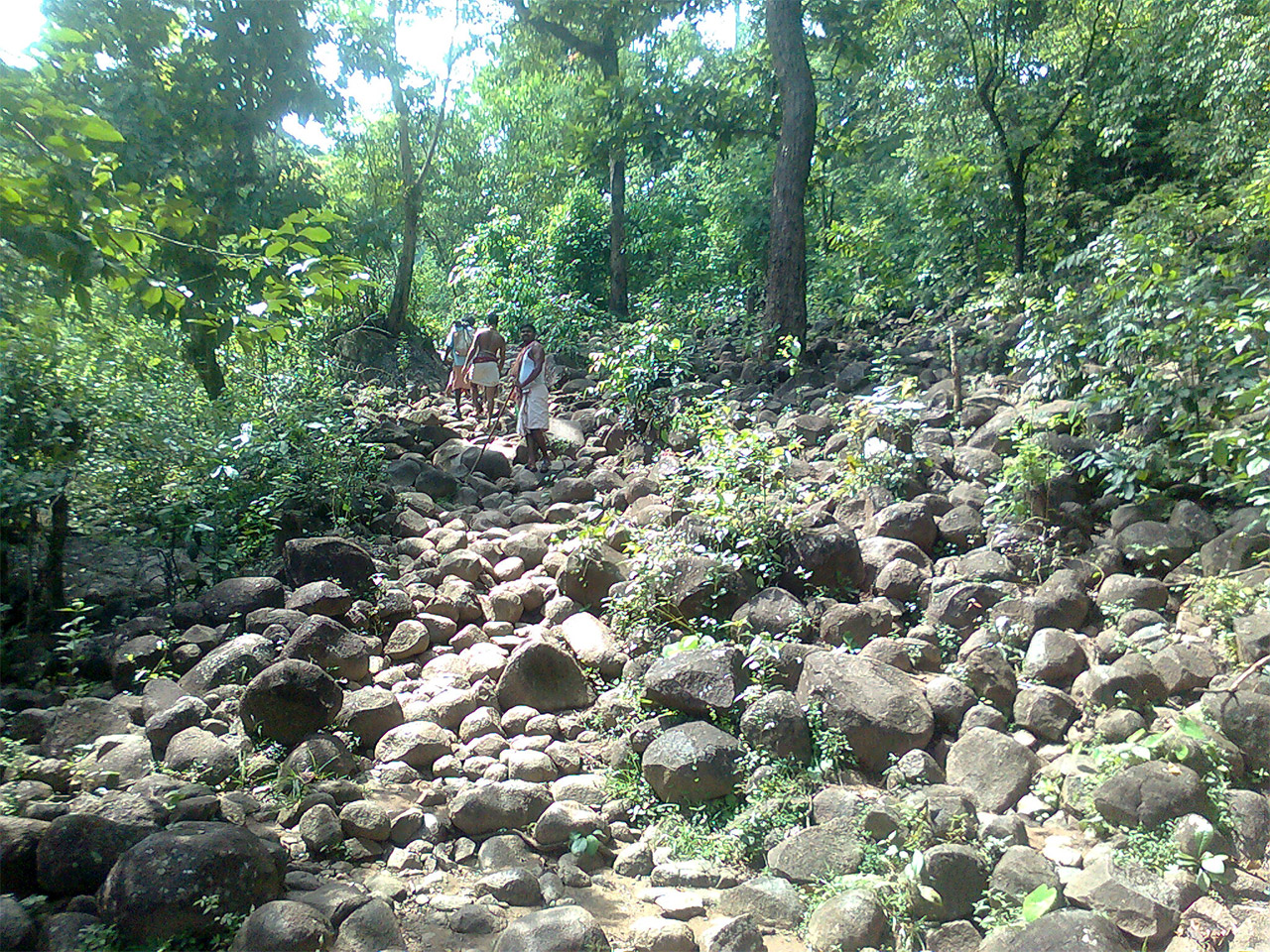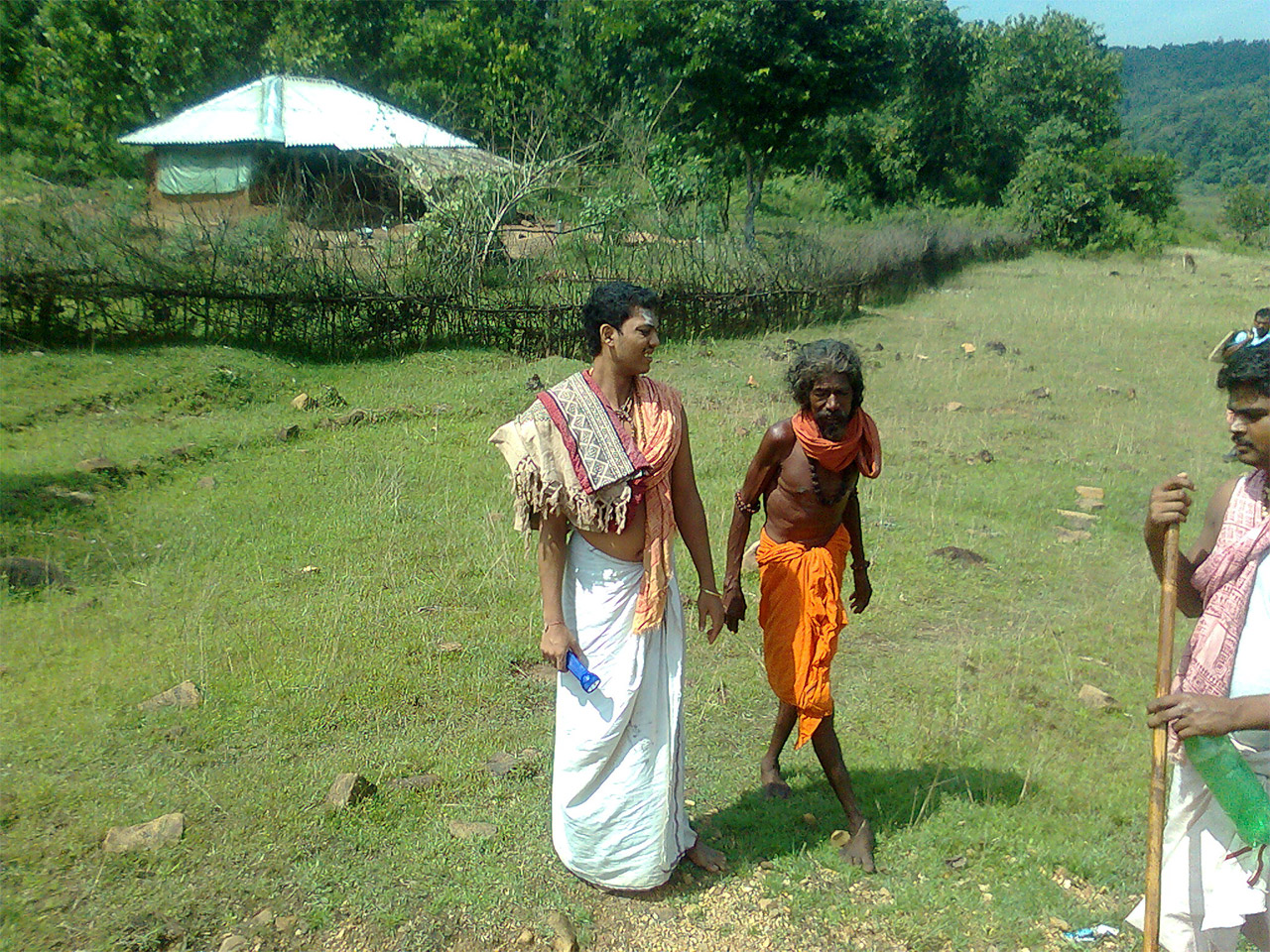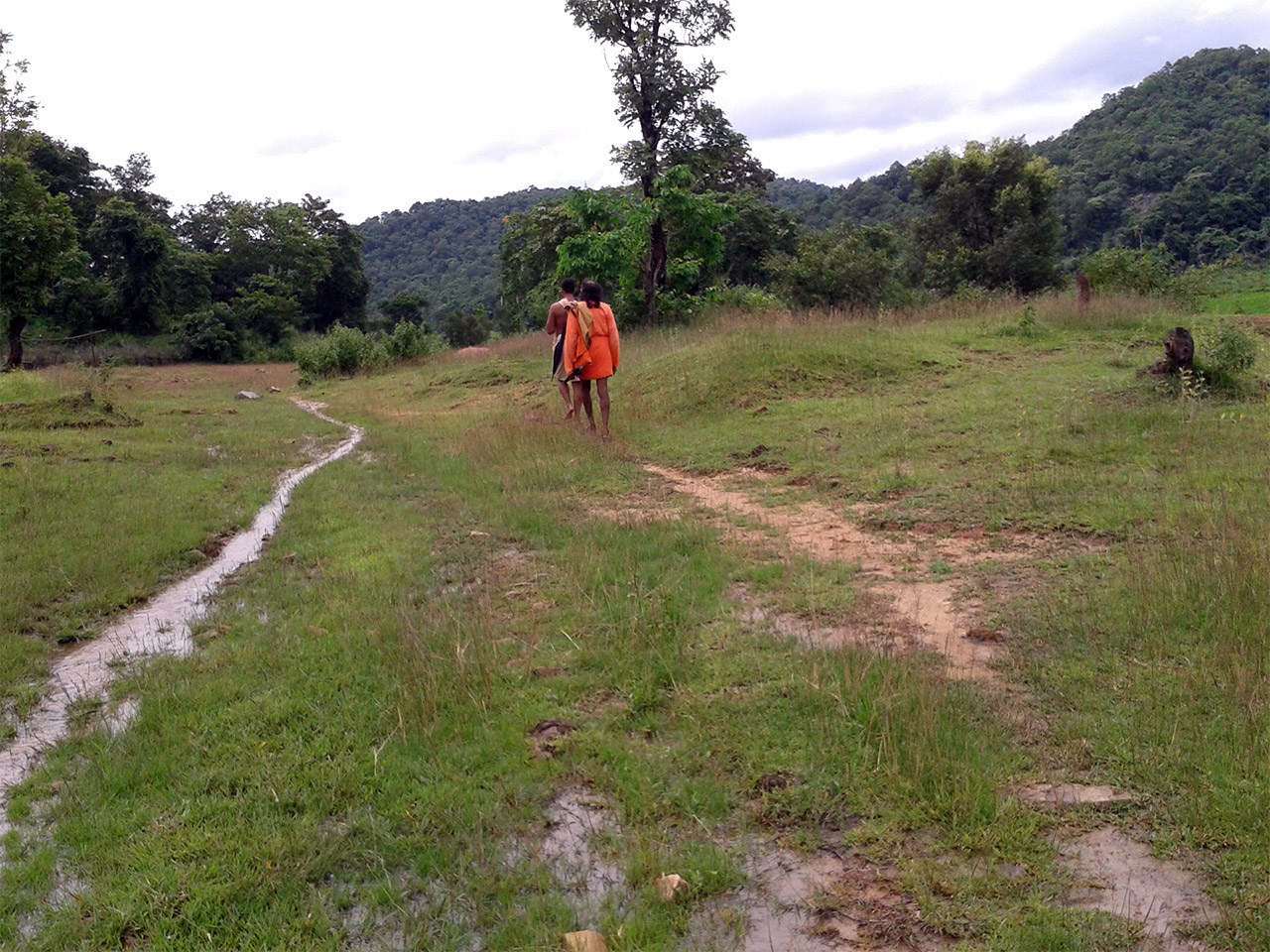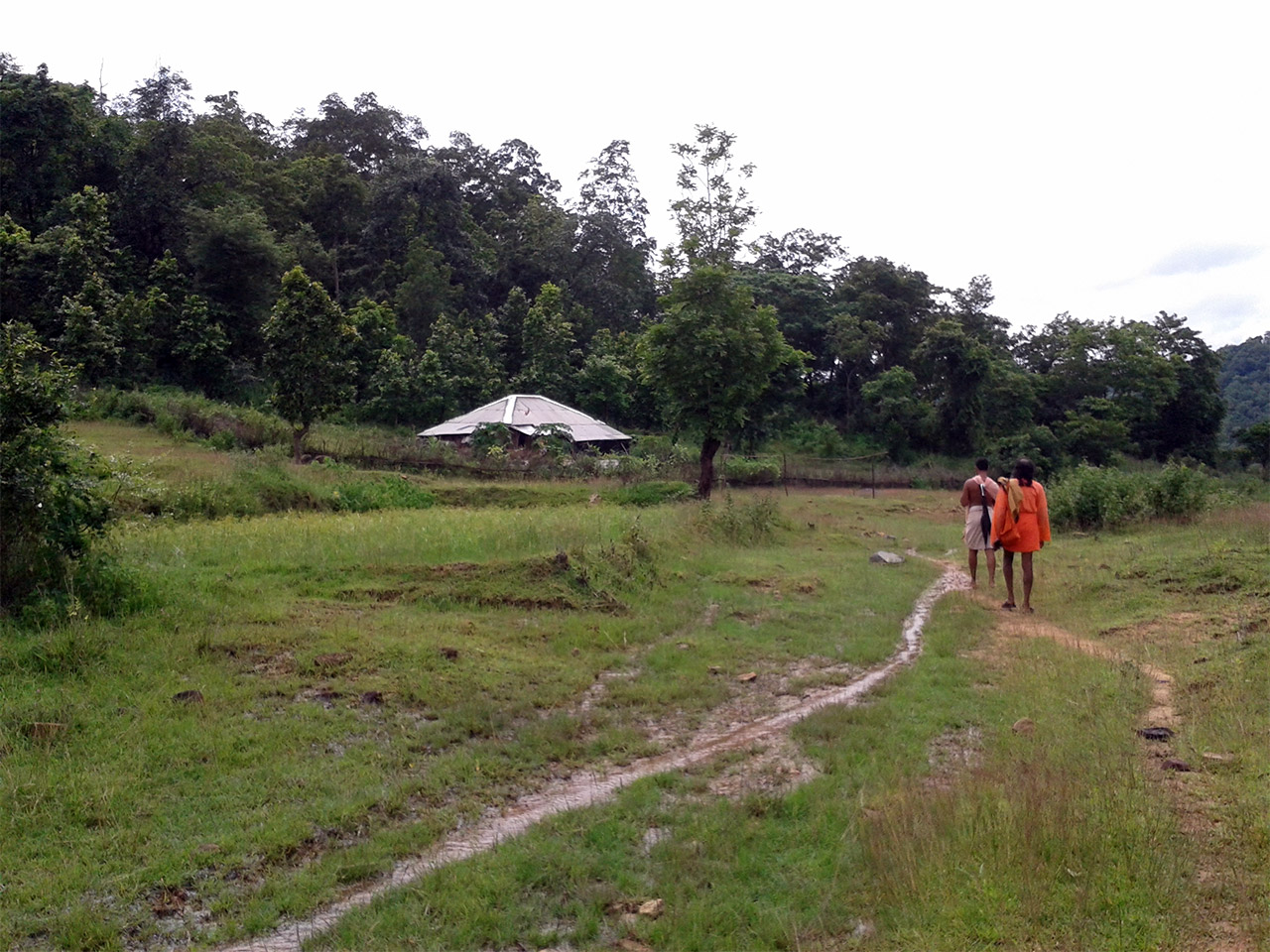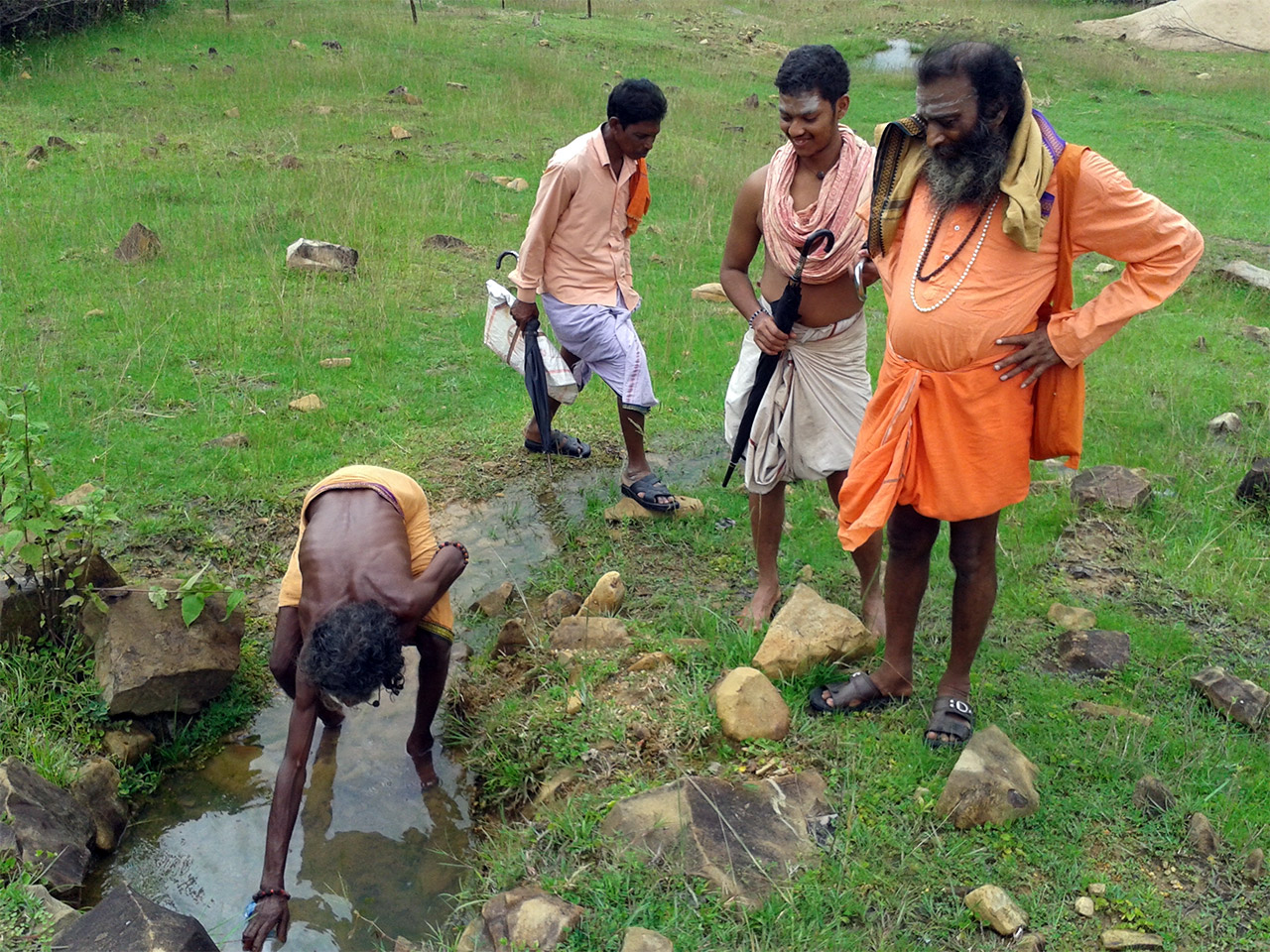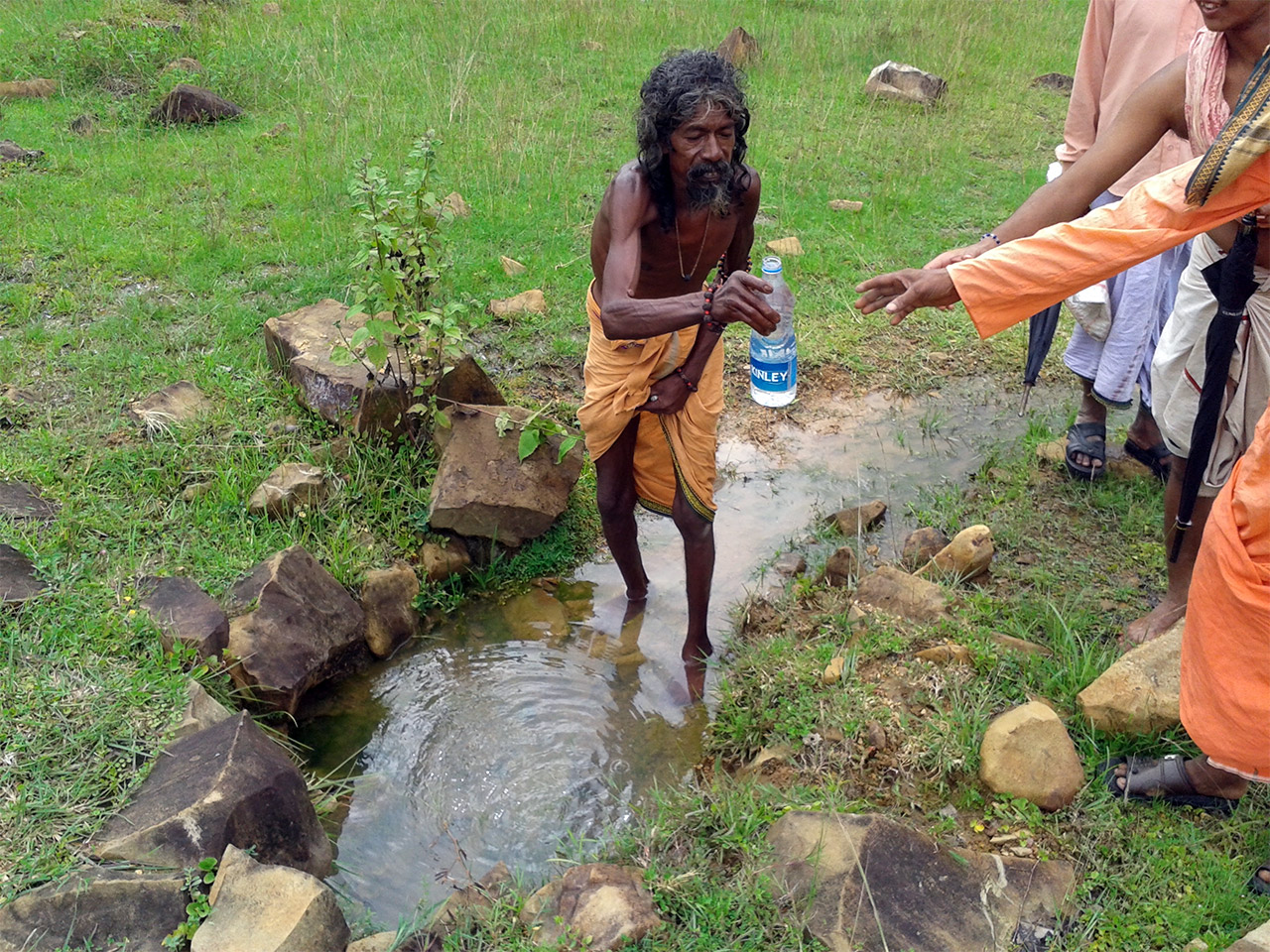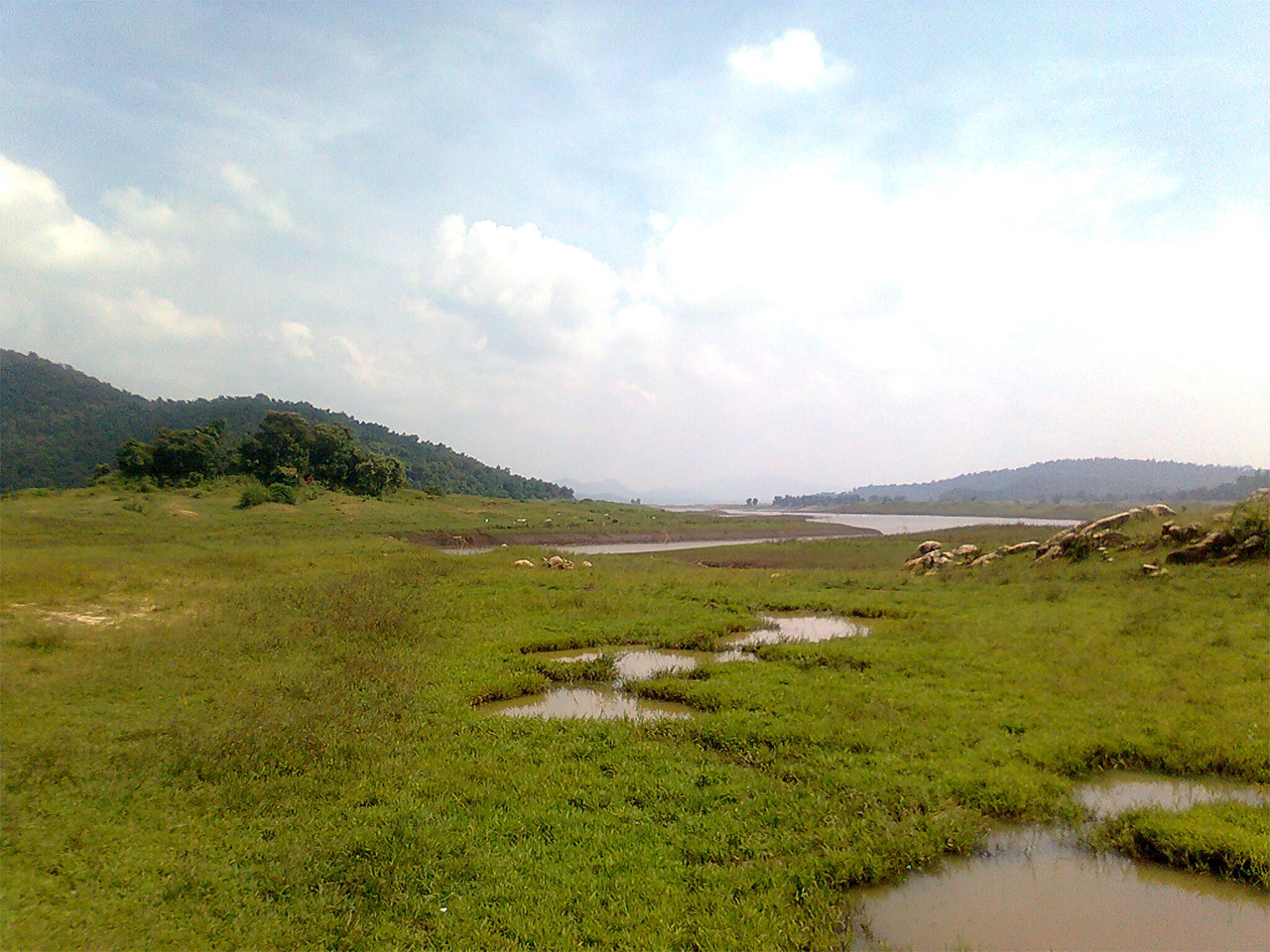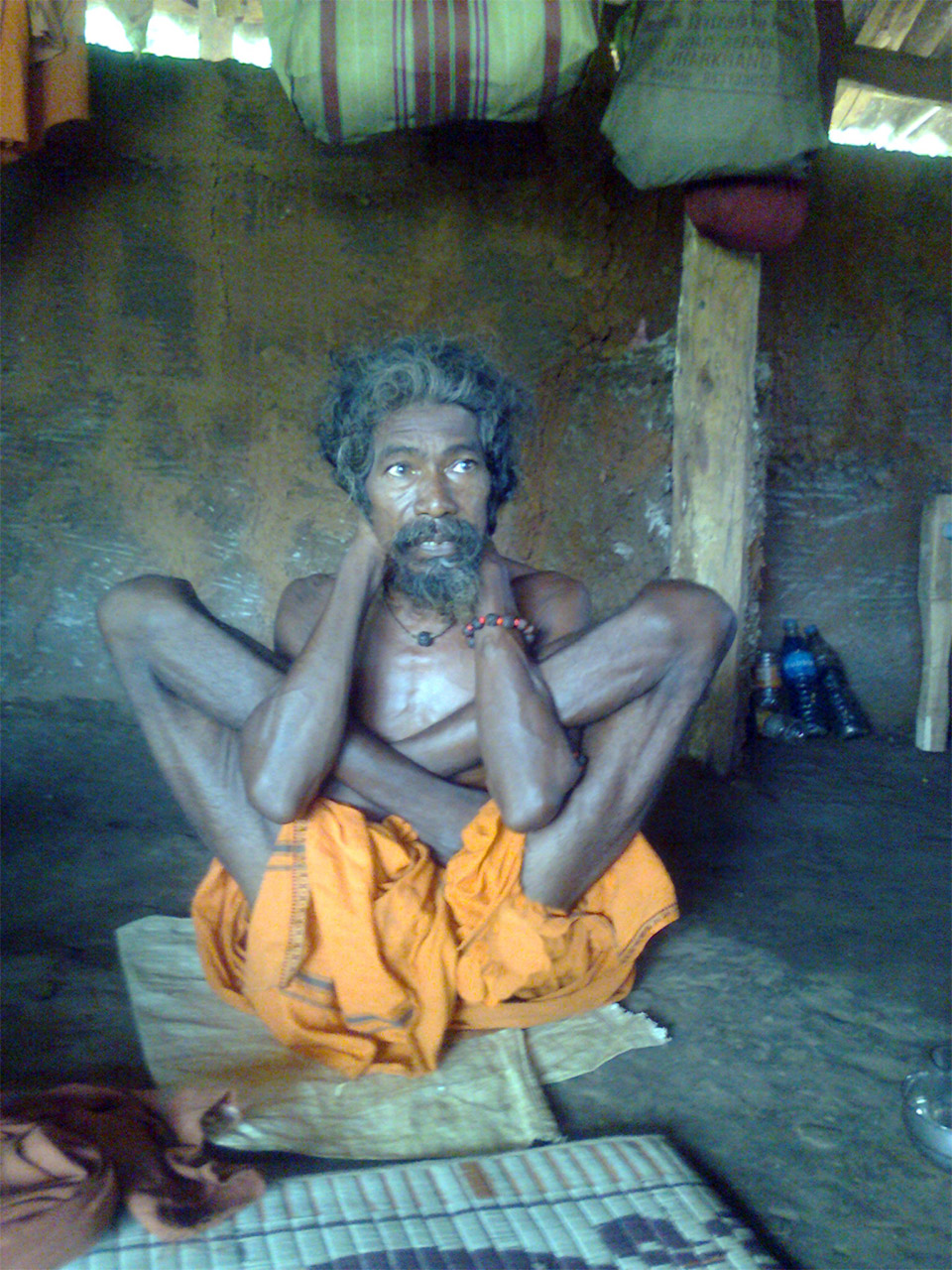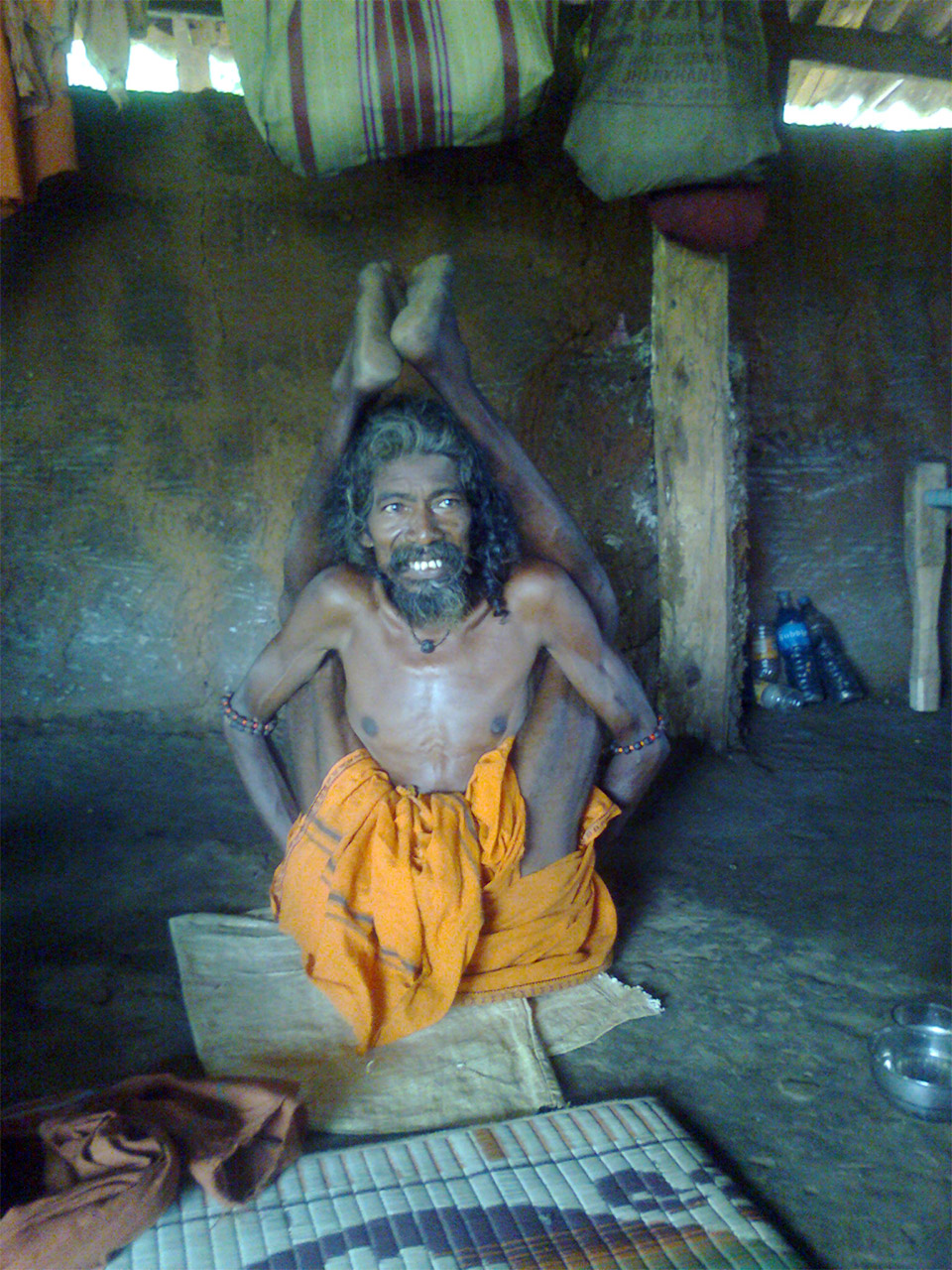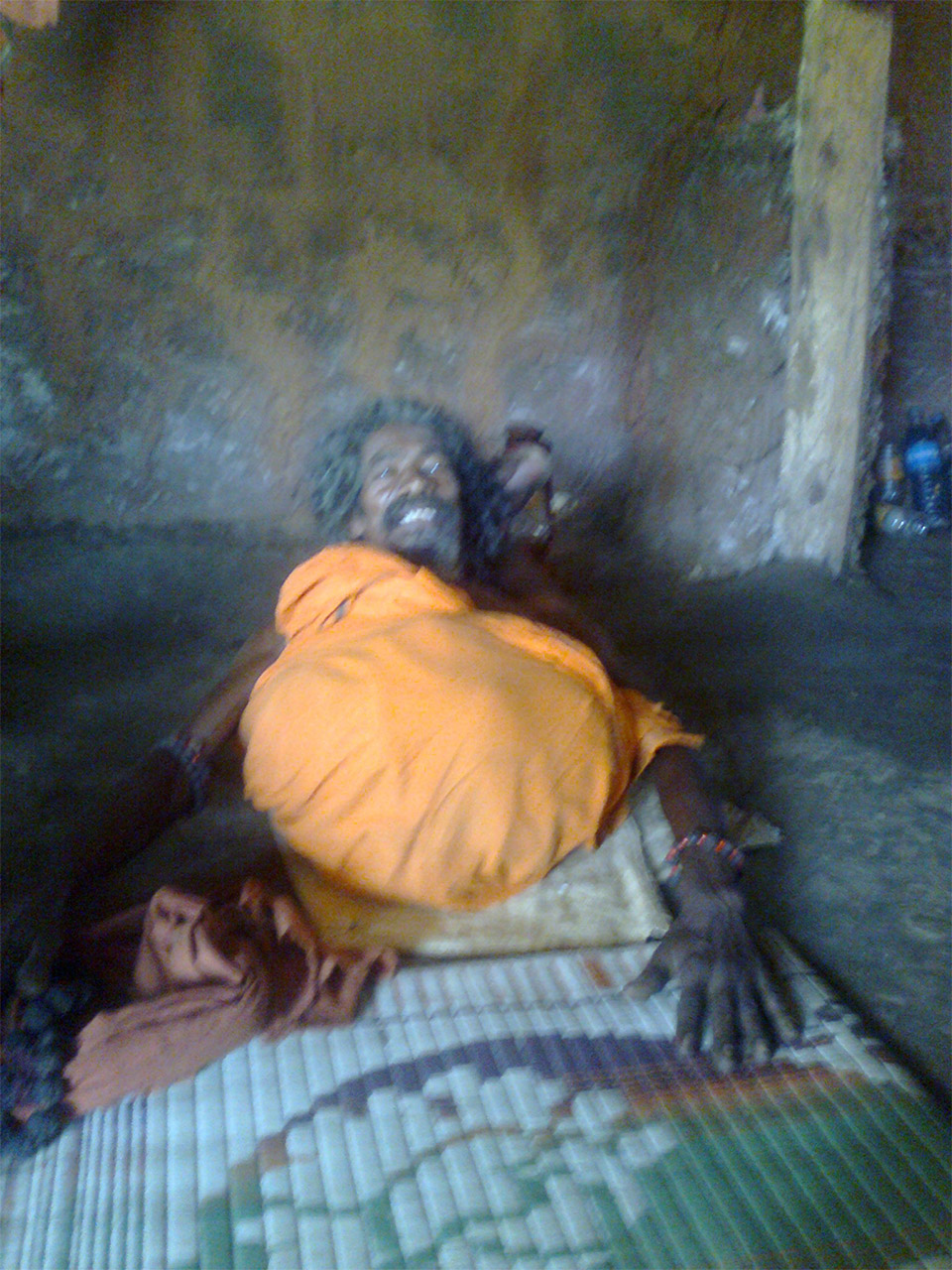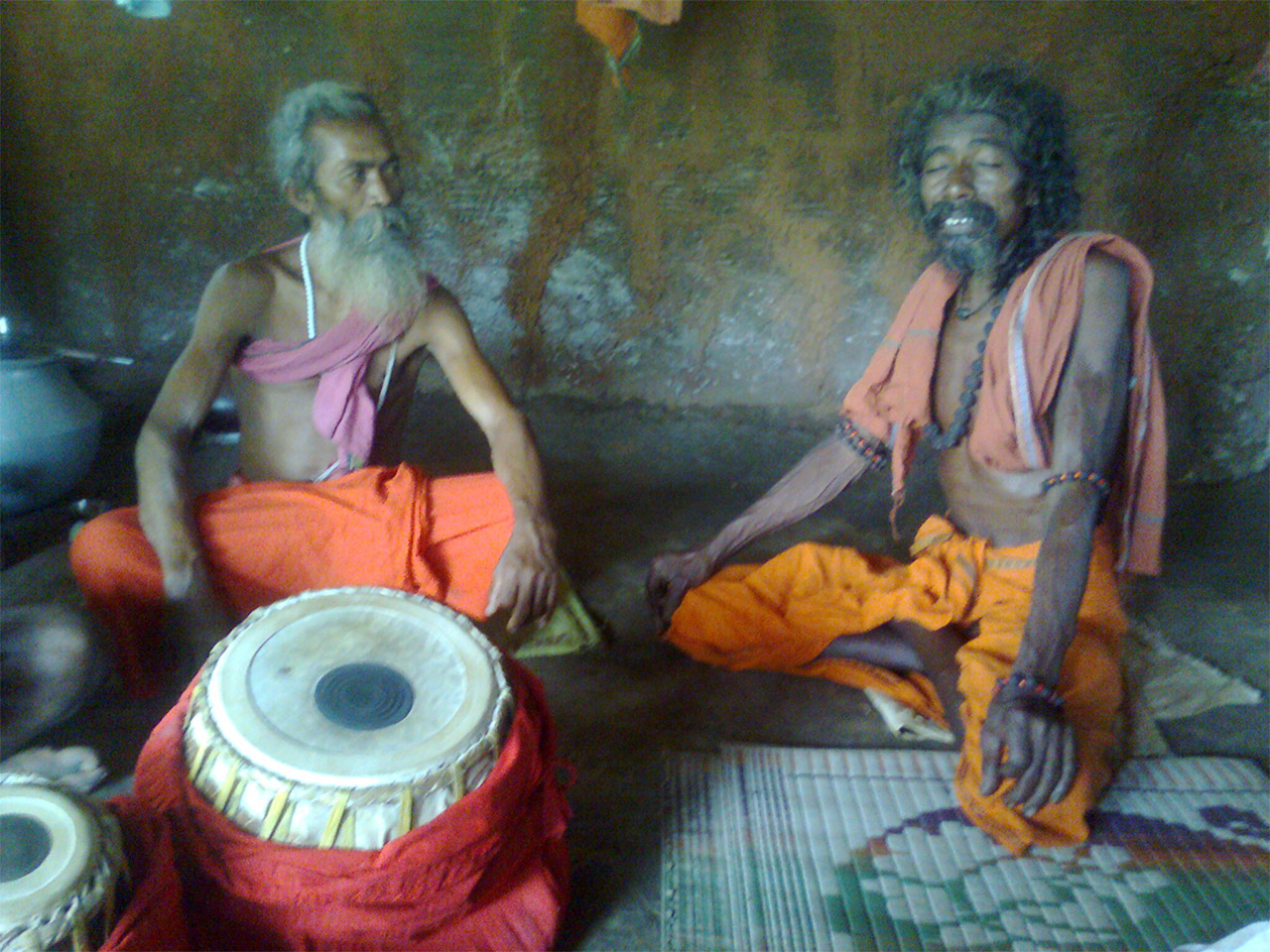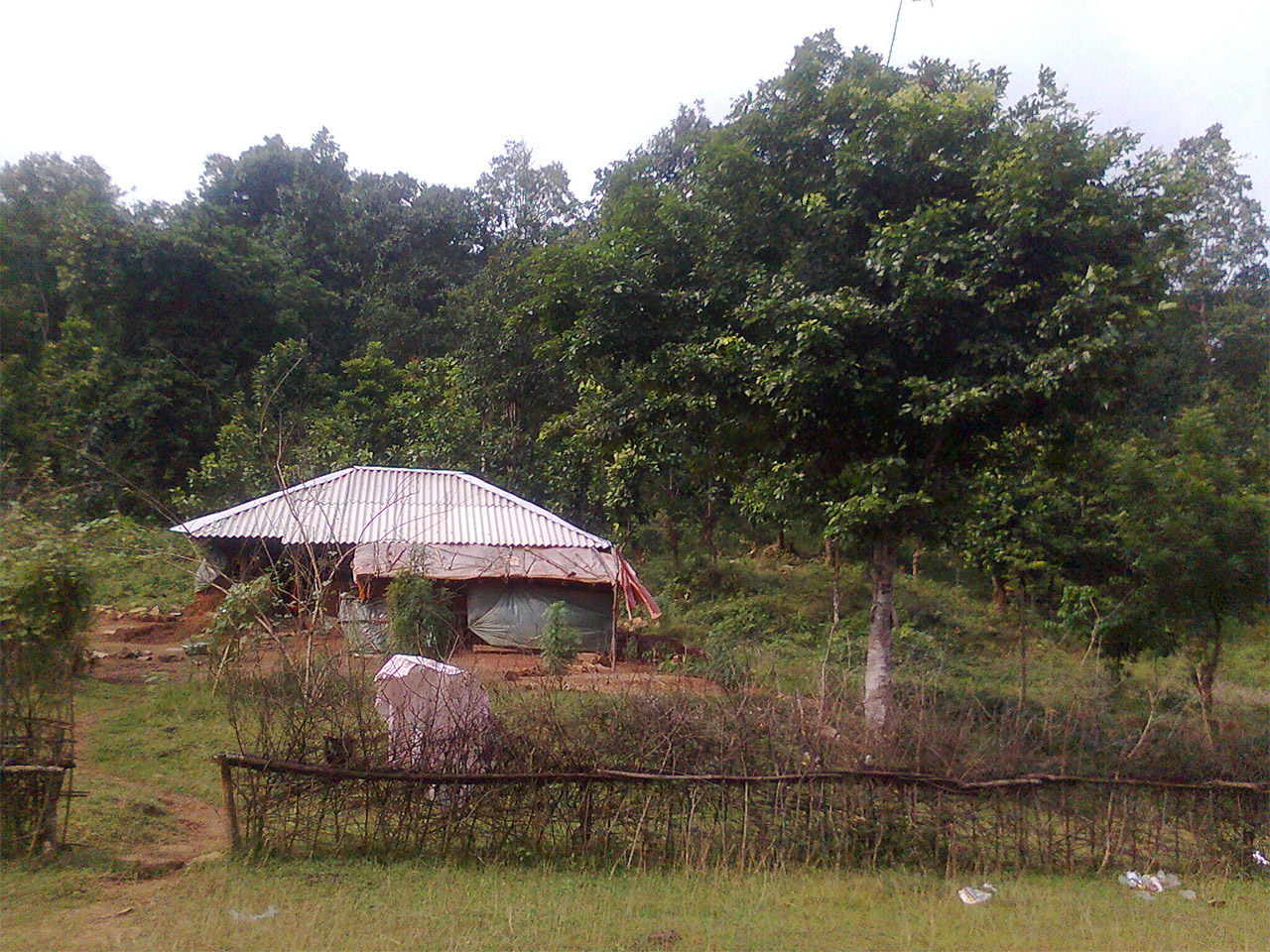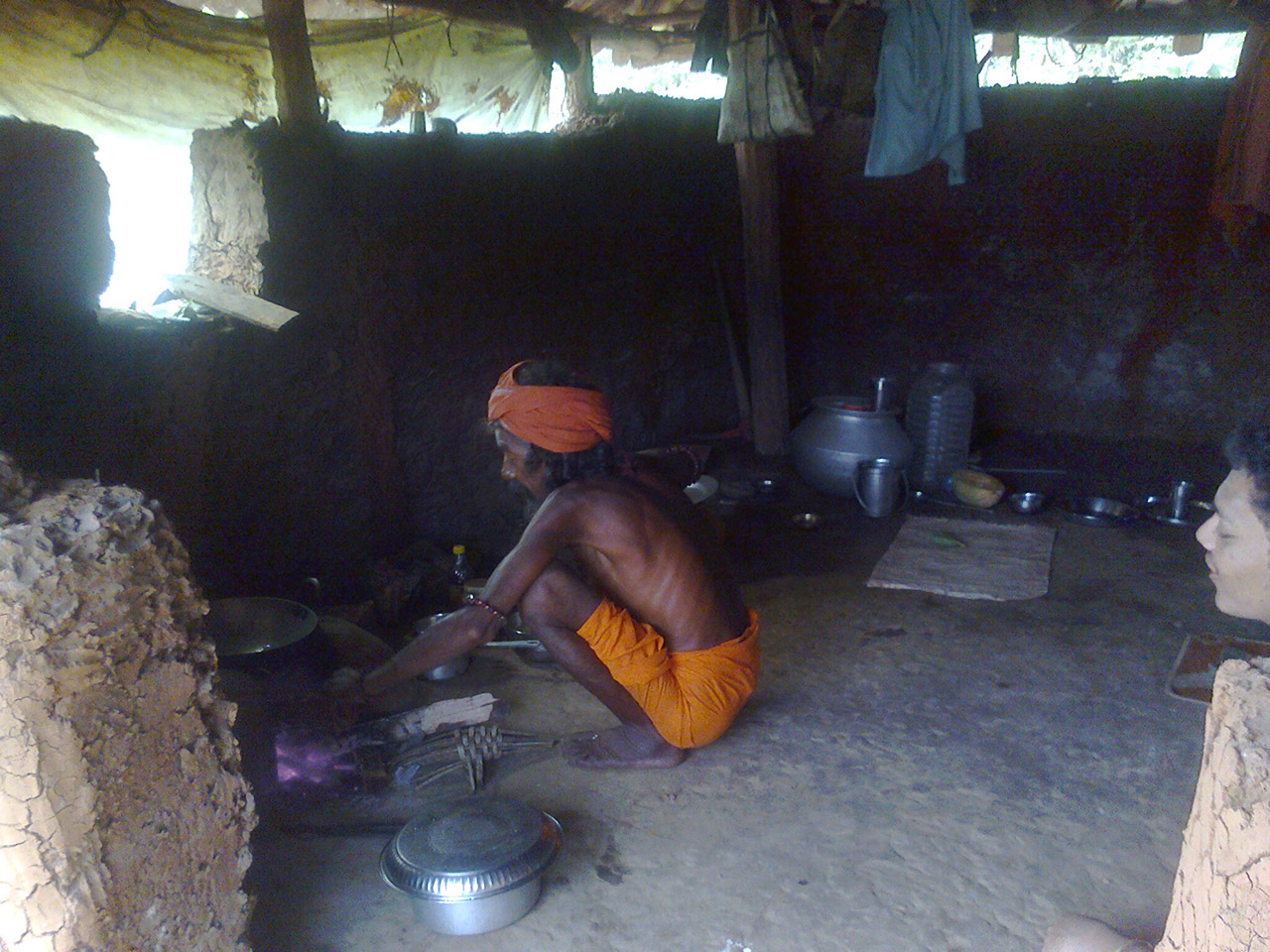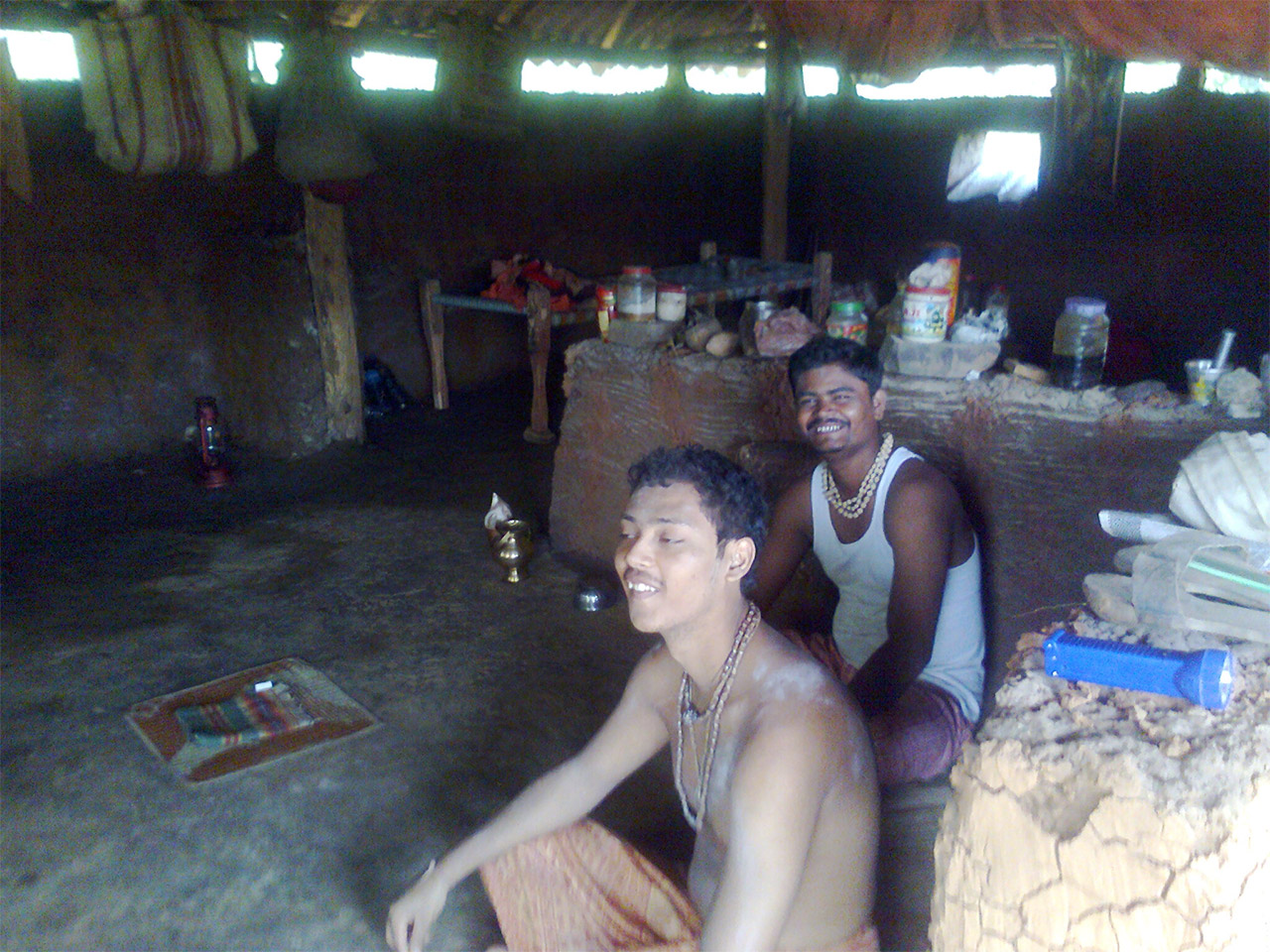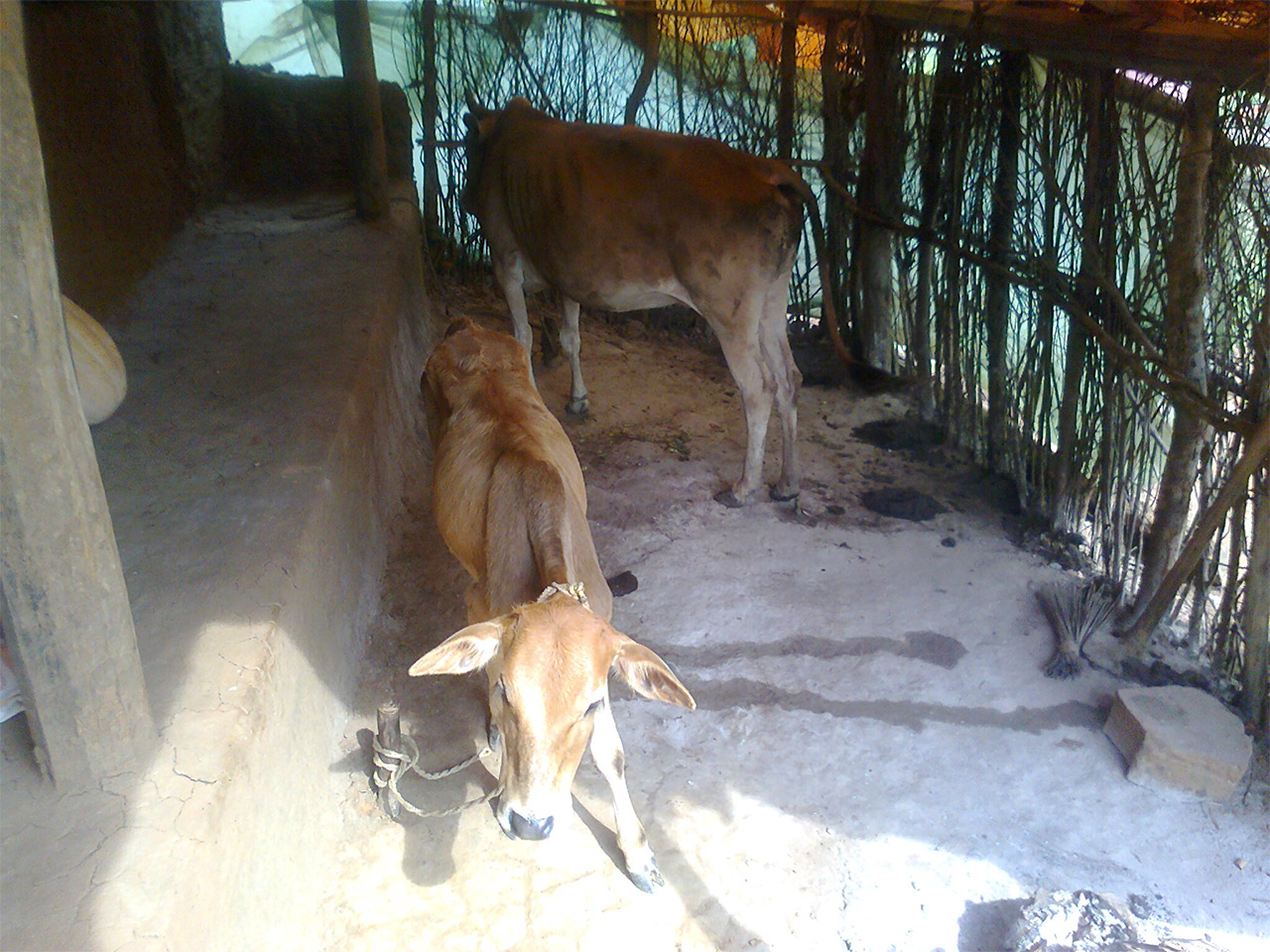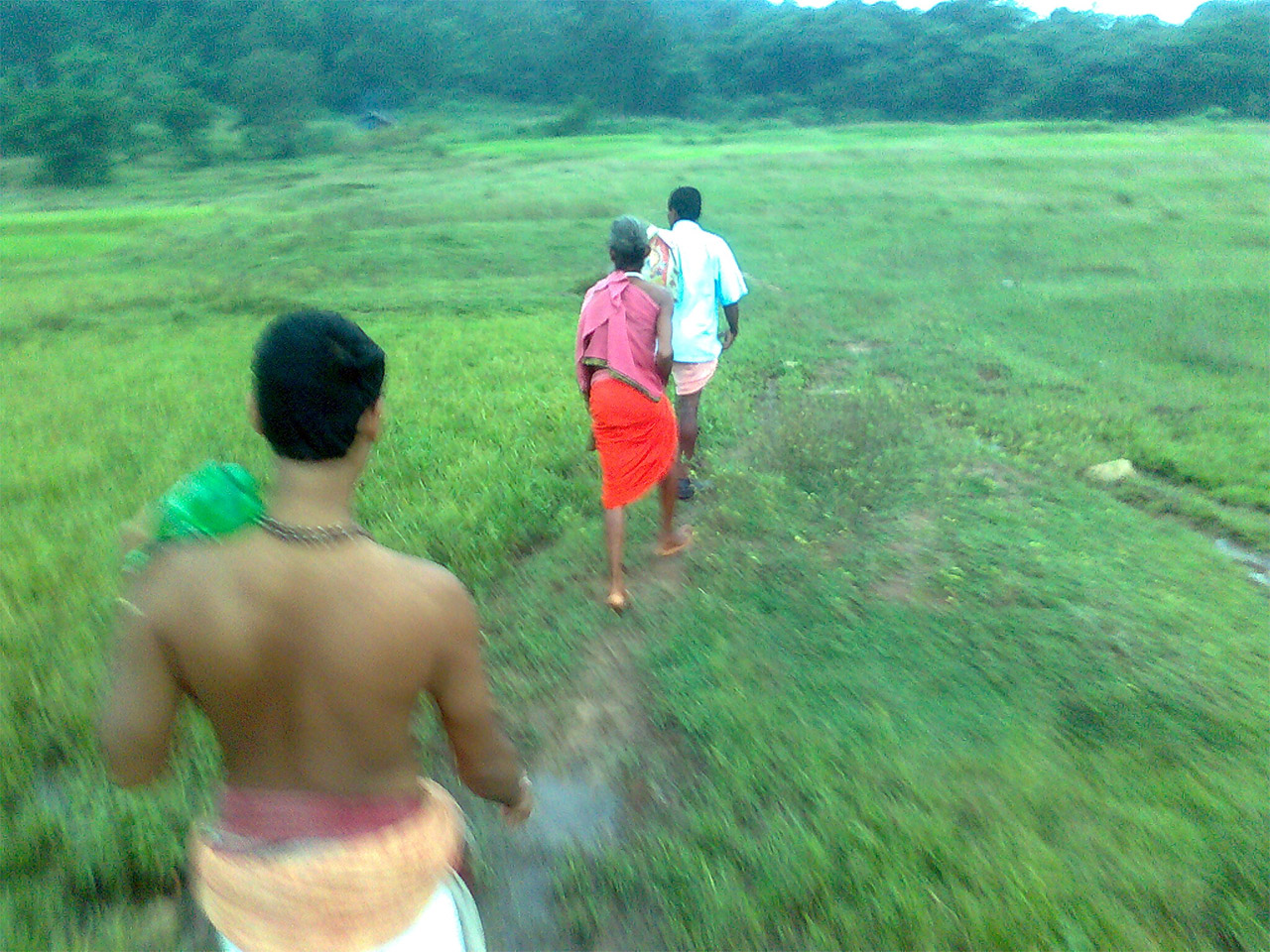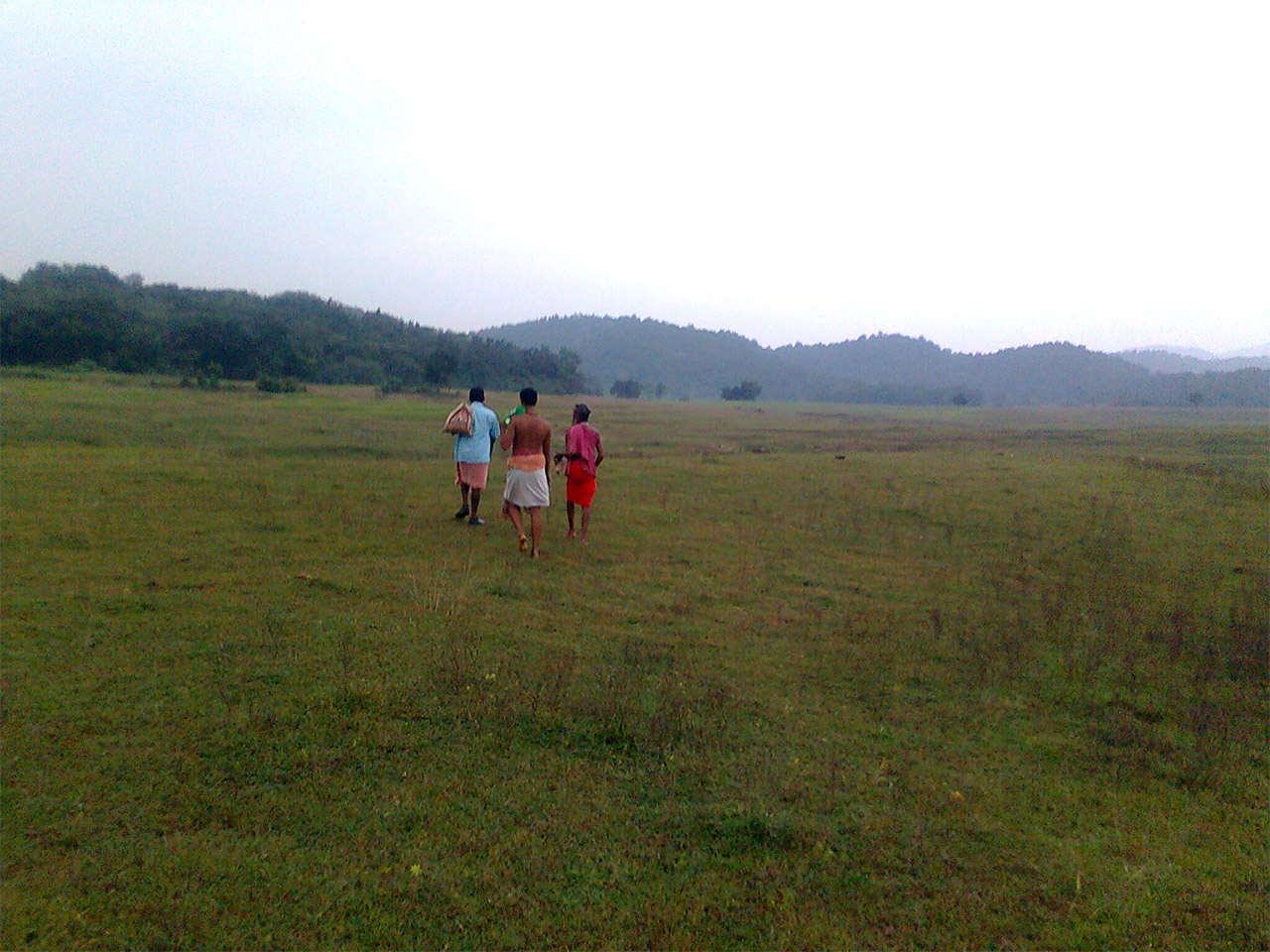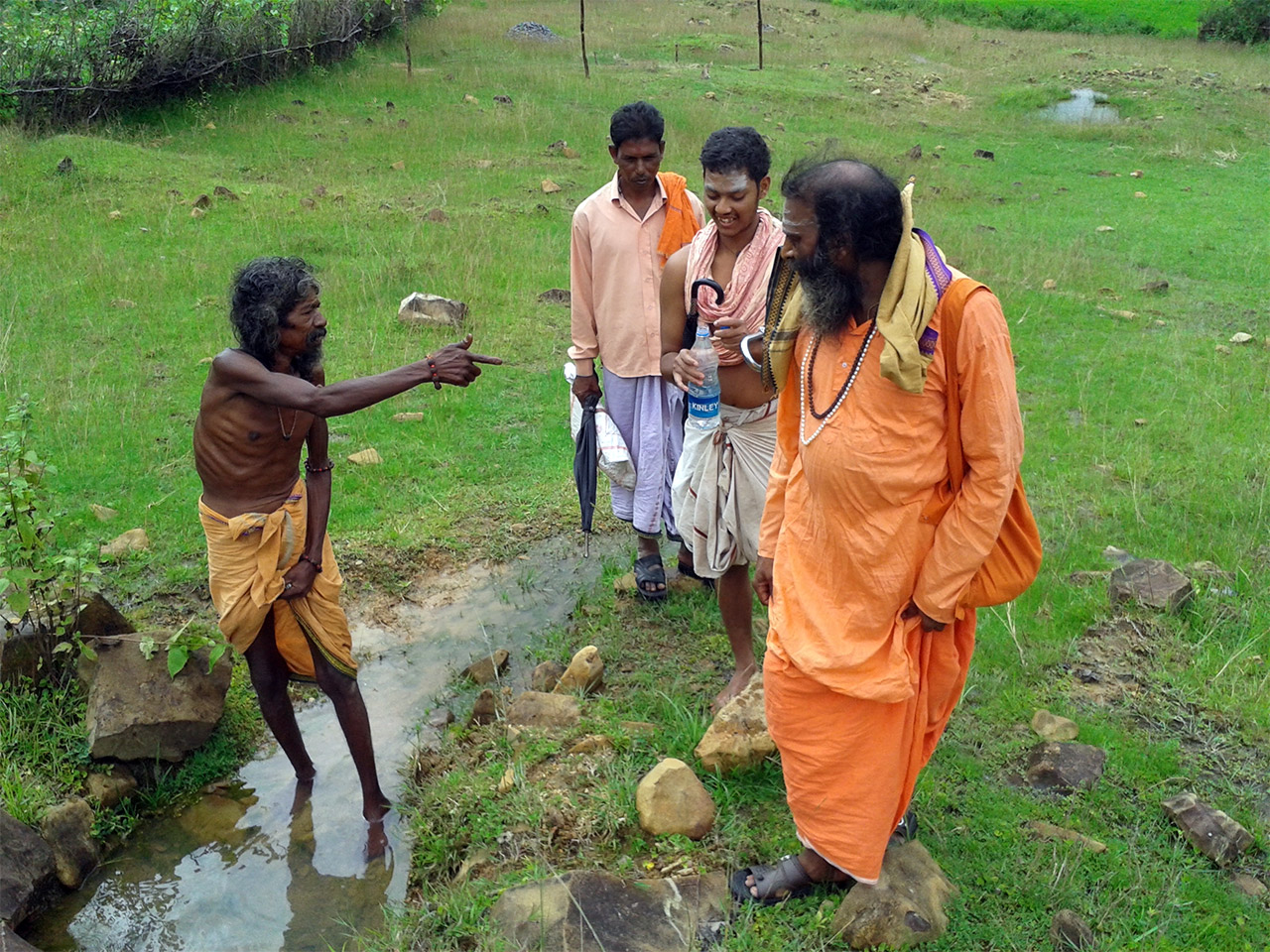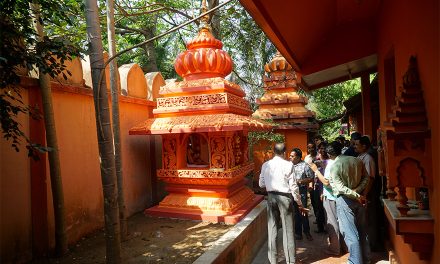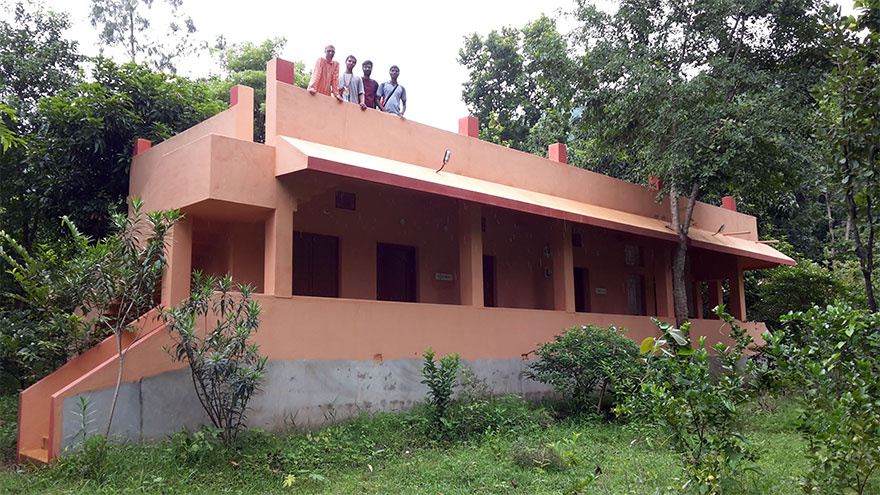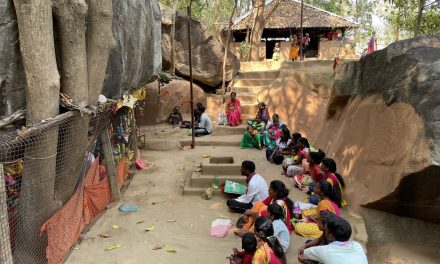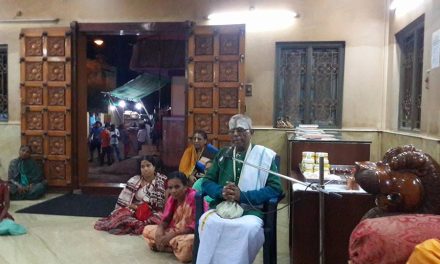I was thinking not to post this one because people may get caught up on the interpretation. But finally I thought I might as well put it out there, and leave it for everyone to interpret how they like.
First, to put a face to the story, this is a picture I took in 2013 when I went to visit Vishwanatha Baba (on the left with no shirt). He had been staying alone in a very remote area in the mountains on the banks of the sacred Salandi river.
On the right of the photo is his godbrother, Aditya Baba, both of whom are disciples of a powerful saint named Ram Baba, whose ashram and samadhi is located in the state of Jharkand. On this particular occasion, Aditya Baba had come from Jharkhand to visit the ashram at Chakratirtha, in the Salandi Reserve Forest.
Photo above: On the left is their guru Rama Baba, a very powerful saint who entered samadhi in 2002.
Photo: Aditya Baba at Rama Baba’s ashram in Jharkhand.
Photo: Vishwanatha Baba at his hut on the banks of the Salandi river.
Vishwanath Baba used to stay in a holy place called Chakratirtha, but due to the incessant flow of materialistic tourists he became irritated by the disturbances there and left the place to go deeper and further up the mountain, where at the top there is a beautiful grass clearing alongside the Salandi river.
At first he stayed under a tree on the banks of the river for several months. Later one of his disciples named Damodar Baba helped make a mud hut for him to stay in, and we gave some money for putting the tin roof on the hut. As no roads exist to this location, bringing building materials there was very difficult and required carrying them by hand up the mountain and through the forest.
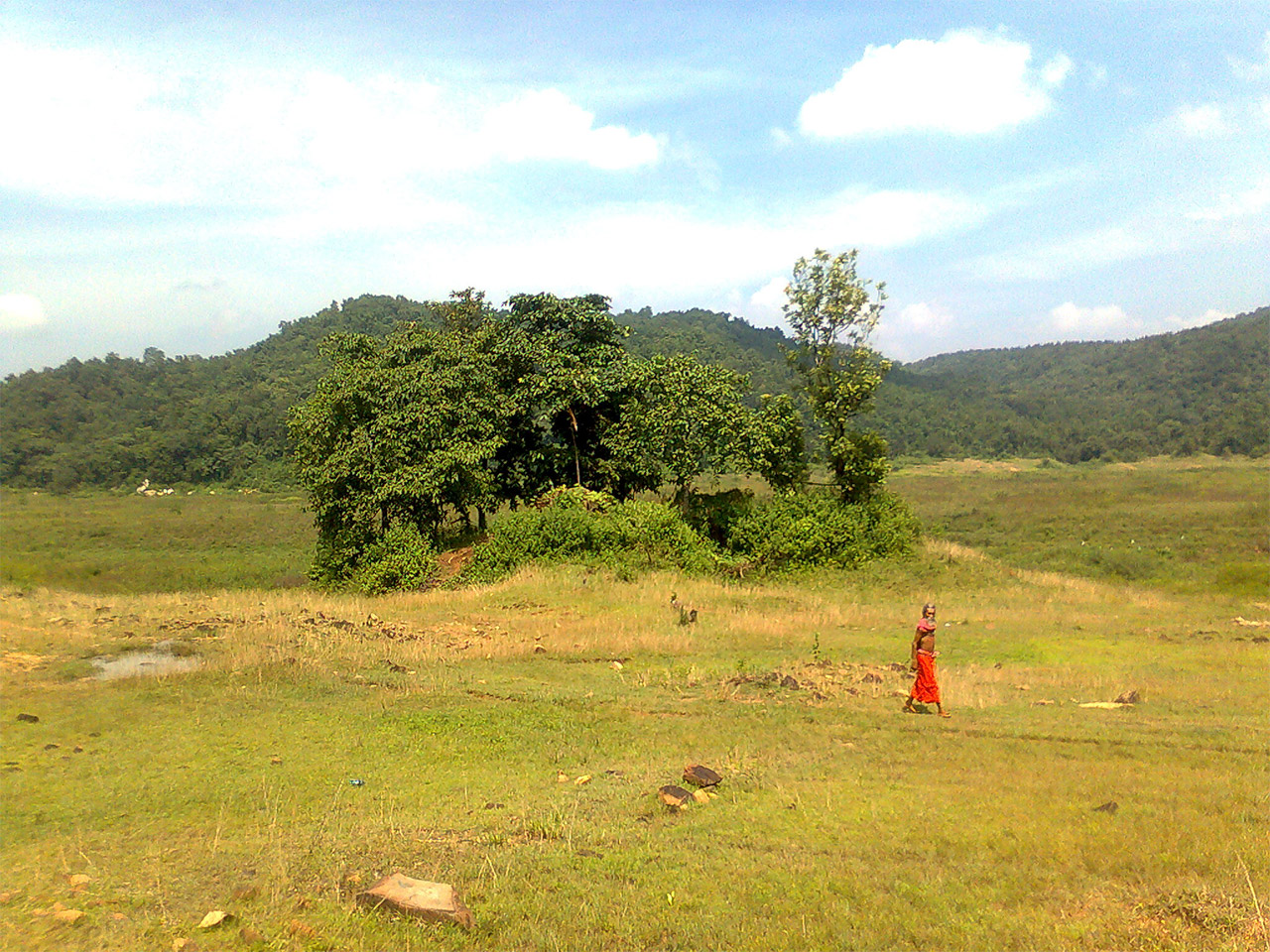 Photo: Dayalu Baba walking in front of the tree where Vishwanatha Baba originally stayed in the open with no shelter. The three linga stones which he worshipped were still present there, shown below.
Photo: Dayalu Baba walking in front of the tree where Vishwanatha Baba originally stayed in the open with no shelter. The three linga stones which he worshipped were still present there, shown below.
Photo: Dayalu Baba standing in front of Vishwanatha Baba’s hut.
To get to this place you had to trek through the forest for a few hours, but when you finally come out of the forest and see this vast flat grassland at the top of the mountain it is an amazing experience. Through the middle of this flat grassland flows the beautiful sacred river named Salandi. In the rainy season the entire area fills with water forming a gigantic lake, which is one edge of the Salandi Reservoir.
Photo: Part of the path through the forest was along a dried riverbed.
Vishwanatha Baba’s elder brother is also a sadhu and great saint named Chakratirtha Baba who has been living in these forests as a sadhu for over 50 years. At the time, Chakratirtha Baba wanted his brother to return to the ashram, so he asked Aditya Baba and myself to go visit him and request him to come back and stay at Chakratirtha.
We ended up making two trips to see him, once with Dayalu Baba and once with Aditya Baba, and on the second trip he kindly agreed to leave his place of isolation and come back to reside in the ashram at Chakratirtha where his brother was staying.
The following photos are from the two trips we made to see him between 2012 and 2013. Each time we stayed the night and as the sun set he would sing bhajans with us, and speak spiritual topics about yoga sadhana and Bhagavad Gita. He cooked simple sadhu food for us, and in the morning we would take bath in the Salandi river and begin the return trek back down the mountain. On the second trip with Aditya Baba we brought back the good news to Chakratirtha Baba that his brother had agreed to return.
Photo: Vishwanatha Baba and Bhagavat Das.
Photo: Aditya Baba and Bhagavat Das walking to Baba’s hut.
Photo: Vishwanatha Baba collecting drinking water from a small spring next to his hut.
Photo: This area is on the edge of the Salandi Reservoir. During the dry months it is a vast flat grassland, but in the rainy season it fills up as a lake.
On one of the evenings we asked Vishwanatha Baba about yoga asanas. He immediately started showing us some of the asanas he had practiced in his youth. Though he hasn’t practiced yoga asanas in many, many years, he had no difficulty in showing us even the most difficult asanas.
Photo: Dayalu Baba and Vishwanatha Baba.
Photo: Vishwanatha Baba preparing simple sadhu food for us.
Photo: Bhagavat Das and Anil.
Photo: Even in this difficult remote place, Vishwanatha Baba insisted on keeping a cow to perform go seva every day.
Photo: Dayalu Baba walking to Vishwanatha Baba’s hut on the first trip.
Now nearly 10 years later, we come back to the present. In November, unexpectedly, Aditya Baba showed up at our ashram in Bhadrak. He had come by bus from their ashram in Jharkhand, and he was on his way to visit Chakratirtha.
He had gotten down in Bhadrak, and first came to our ashram. We spoke with him for some time and arranged for lunch food for him and asked him where he was going and what his plans were. He asked if we could drop him at the bus stand so he could take a bus towards Chakratirtha. Despite him being so elderly, and having lived as a sadhu for so many decades, he was still humbly traveling by bus, which is especially tiring going to interior places.
We called one of our friends who drives an auto rickshaw and told him to take Baba directly to Chakratirtha, which is around 50 km away. Baba asked if one of our devotees could accompany him in the auto rickshaw to Chakratirtha, so we sent our temple pujari, Bhagavat Das, along with him, who he has known for many years.
When they reached Chakratirtha, there was a sadhu assembly taking place from different places, they had come from various districts to discuss amongst themselves. This is not a common thing, and we had not seen it here before. After the sadhus left, Vishwanatha Baba told to Bhagavat Das, “Now war is about to start.”
He said, “During the Mahabharata war, out of the 18 days battle, half a day’s fighting was kept reserved for fighting in Kali Yuga. Now that last remaining part of the Kurukshetra battle will be fought. The war will be fought between the mlecchas and the yavanas.”
He further said, “Now Bhagavan isn’t present in the temples. If He was in the temples then He would pull people to Him, and no one could stop people from going to see Him. But they are able to lockdown the temples and block people from going to the temples. We can see no one is getting pulled to Him in the temples, so His presence isn’t there anymore. He has shifted His presence to Kalki Bhagavan, and will begin His destruction lila.”
Having known Vishwanatha Baba for nearly 20 years, this was all very unusual for him to speak like this. In the past he would avoid talking about the future, and when we would ask him questions about it, he would choose to avoid the topic. This was the first time he himself, without being asked, had told us these things will be coming soon.
His words are open to interpretation, and everyone can take them to mean what they see in them. Will there be a war? Which countries will be involved? Seeing the present situation in the world things look very precarious. I have my own opinions about what this all means, but since they are just opinions, I will leave them out and you can decide for yourself what it means, or if it means anything at all.
Regardless, this recent unexpected meeting with Aditya Baba brought back my memories of the trip we took together to the top of the mountain to request Vishwanatha Baba to return to Chakratirtha nearly 10 years ago.
Whether or not a war commences, it is always good to keep a six month stock of nonperishable food for emergencies. In the event of any type of natural disaster, war or supply chain disturbance, one will be able to feed one’s family and neighbors without worry.
The following video is a recording of the evening kirtan from the first visit. Present for the kirtan were Vishwanatha Baba, Dayalu Baba, Damodar Baba, Bhagavat Das and myself. The first three kirtans were led by Damodar Baba, and the rest by Vishwanatha Baba. The audio is not that good, because it is from 2012 and we didn’t have a good recording device.
This is the pure kirtan of authentic sadhus living in the remote forest away from people, electricity and modern life. In the evening as the sun sets and everywhere becomes dark they light the kerosene lantern and sit around singing bhajans about Bhagavan.

